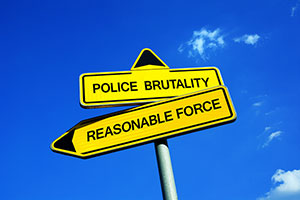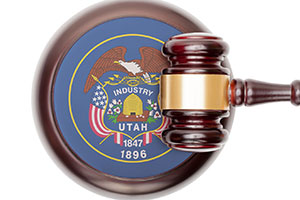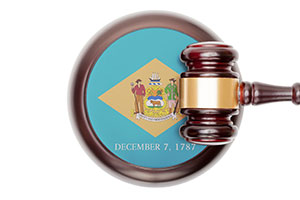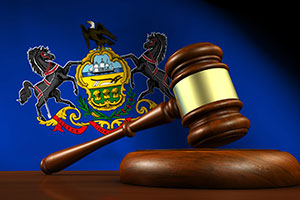Should rap lyrics be taken as evidence of criminality? Expert witnesses faced off over that question in the trial of three young men who were charged with felony murder in Knox County, Tennessee.
Zaevion Dobson Murder
Brandon Perry, 23, fired a number of shots in in Northwest Knoxville. The shooting related to a dispute between Perry and the uncle of his girlfriend’s child. Two hours later, someone shot at the home of Perry’s mother in East Knoxville.
Video from a squad car shows Perry and Christopher Bassett, 22, arriving at Perry’s mother’s home shortly after the shooting. Surveillance footage suggests that Perry and Bassett met up with several other young men. Six to eight men traveled to Lonsdale, where they began shooting. It has never been clear whether the men had a specific target in mind or how the Lonsdale shooting related to the shootings in East Knoxville.
Fifteen-year-old Zaevion Dobson played football for a Knoxville high school. Dobson, who had no gang involvement, reportedly shielded two girls when he heard the shots being fired. Dodson was killed in the shooting. President Obama mentioned Dobson’s heroism in a State of the Union address.
Charges Filed
Prosecutors charged three men with felony murder: Bassett, Richard Gregory Williams III, 23, and Kipling Colbert Jr., 22. Before the trial started, Williams was convicted of trying to kill a witness to the Dobson shooting. Prosecutors argued that his effort to kill a “snitch” demonstrated his gang involvement.
However, Bassett was a college student with no obvious gang affiliation. It wasn’t necessary to prove that any of the defendants were gang members given the other evidence in the case, but prosecutors likely believed that jurors would more readily convict if they viewed the defendants as gang members.
Gang membership is not itself a crime. The First Amendment protects freedom of association, including membership in a social organization. Whether the organization is the NRA, the Shriners, or a group that that society labels as a “gang” makes no difference to the constitutional right to associate with others.
On the other hand, membership in a criminal organization may suggest that members of the organization shared a common motive to commit a crime that benefited the organization. The First Amendment does not protect the right to associate for the purpose of committing a crime.
Rap Evidence
Prosecutors advanced the theory that the defendants belonged to the Bloods and that they committed violence in Lonsdale because it is the territory of a rival gang, the Crips. To demonstrate the defendants’ gang involvement, prosecutors introduced evidence of a rap video.
The video was posted to YouTube several months before the shooting. Several young men are lip-syncing in the video to “a rap song pledging allegiance to the Bloods street gang and describing street violence” — at least, that’s how the prosecution viewed the video. Bassett, Williams, and Colbert are among the participants. Basset appears, unarmed, for about half-a-minute in a five-minute video.
Again, rapping about gang violence is not a crime. The First Amendment guarantees freedom of speech, including the freedom to make a statement about the world as the speaker sees it, subject to very limited exceptions.
However, freedom of speech provides no absolute guarantee that the speech will not be used as evidence in a criminal trial if the speech is relevant proof of the crime. The government may tread upon the First Amendment, however, when it uses a person’s speech merely to suggest that the speaker should be punished for ideas that the speaker expressed. Prosecutions in other cases have been problematic to the extent that they use rap lyrics to suggest that the defendant is a criminal because the defendant raps about crime.
Conscientious judges are careful to prevent prosecutors from using protected expression to suggest that a defendant is bad because his lyrics are bad. When judges allow rap lyrics to be used as evidence, experts in rap are sometimes used to explain rap culture to juries who might have a stereotyped view of rappers.
Bassett’s lawyer tried to keep the video from being shown at the trial. The judge ruled that the lyrics were relevant. In particular: “Pull up. Pop out. Everybody get down if you don’t wanna get smoked.” According to the judge, “This is similar to the act and motivation the state alleges occurred in this case.”
One reasonable response to that reasoning is “So what?” The judge could not have believed that the lyrics described an apparently spontaneous crime months before it was committed. Moreover, lip-synching, like singing along with a song, cannot reasonably be seen as endorsement of the song’s lyrics. The defendants’ lawyers were legitimately concerned that the jury would convict the defendants because they were offended by the song lyrics or would use the song as evidence of bad character — a use that the law of evidence forbids.
Gang Expert Testimony
To bolster their case, prosecutors called Sgt. Tom Walker, a gang investigator for the Sheriff’s Office, as an expert witness. The investigator testified about the rivalry between the Bloods and the Crips. The Bloods claim the east side of Knoxville as their territory while the Crips claim the west side, including Lonsdale. He also testified about retaliation as a gang imperative.
A witness heard Colbert say “What’s bracking?” Walker testified that the Bloods use the phrase to mean “What’s happening?”
More controversially, Walker interpreted the rap video. He expressed the opinion that it is “definitely a Bloods song.” He based that conclusion in part on the fact that people in the video were wearing red bandanas and that red is a Bloods color. Of course, members of the Heartbeats often wore red corduroy jackets when they performed in the 1950s, but nobody accused them of being gang members.
On cross-examination, Walker admitted that the police had no record of any defendant being associated with a gang. Walker had testified as a gang expert in 29 trials, and this was the only one in which the police had no record that the defendants were gang members.
Walker also admitted that he is not an expert in African-American culture or rap music. He does not generally listen to rap music. He knew that the phrase “studio gangsta” refers to someone who pretends to be in a gang, and admitted that he was unaware that some defendants had social media accounts that promoted songs, including the one that was introduced as evidence.
Rap Expert Testimony
Erik Nielson testified for the defense as an expert in rap music. Nielson, an associate professor at the University of Richmond, wrote an article for Rolling Stone that condemns an “increasingly popular law enforcement tactic: using rap lyrics as evidence.” Nielson notes that prosecutors ask juries to take rap lyrics literally rather than as artistic expression, something that is not done in any other expressive genre.
Nielson described “studio gangsters” as artists who create a studio persona as gangsters that does not reflect their real life. Nielson also testified that the video introduced into evidence is a knock-off of a song called “SixDouble0” made by Chicago rapper Edai.
The defense argued that the defendants appeared in the video because they were aspiring rap artists, not gang members. Building a defense on Nielson’s testimony, they argued that the defendants were studio gangsters, not actual gang members.
Verdict
The evidence of gang membership was slim and the use of the video as evidence is troubling. At the end of the day, however, the video may have contributed little to the verdict, although it might create an appeal issue that could favor the defendants. Using expression of opinions that do not directly relate to a charged crime is prejudicial and in this case, arguably a violation of the First Amendment.
Other evidence, however, may have been more persuasive in convincing the jury to find all three defendants guilty. Bassett was the only defendant found guilty of first-degree murder. He was given an automatic life sentence for that crime. The judge sentenced him to an additional 35 years for his convictions of attempted murder.
Colbert and Williams were found guilty of facilitating first-degree murder as well as several other crimes. Colbert was sentenced to 107 years and Williams was sentenced to 143 years. All of the convictions are likely to be appealed, and the competing views of the expert witnesses about using rap lyrics as evidence will be an important issue for the appellate court to consider.













